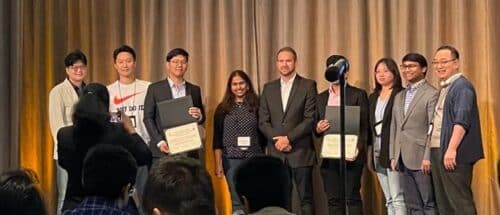The creation of a mmWave Backscatter System by a team under the direction of Professor Song Min Kim from KAIST School of Electrical Engineering, is great news for the IoT market since it will be able to offer quick and dependable connectivity even for a large network, which may allow IoT devices to finally realise their full potential.

The research team developed a system that enables simultaneous signal demodulation in a complicated communication environment where tens of thousands of IoT devices are organized indoors using their mmWave backscatter approach. mmWave has a large frequency range that exceeds 10GHz, which offers excellent scalability. Additionally, backscattering reflects radiated signals rather than wirelessly generating its own, allowing for ultralow power operation. As a result, the mmWave backscatter system provides inexpensive mass internet connectivity to IoT devices.
Due to its use of carrier waves with frequencies ranging from 30 to 300GHz, the mmWave is a communication technology that can be included into 5G and 6G standards. However, the existing mmWave backscatter method only allows communication in specific situations due to signal loss at high frequencies and signal reduction at low frequencies. It is therefore restricted to the IoT device market.
The high coding gain of an FMCW radar is where the study team discovered the answer. The group created a signal processing technique that can essentially distinguish between backscatter data and background noise while preserving the radar’s coding gain. They also created a system that passively assigns them channels due to the radar’s feature that causes the frequency of the demodulated signal to vary based on the actual position of the tag. As a result, the frequency spectrum at 10 GHz or above can be used to its maximum potential by the ultralow-power backscatter communication system.
The designed system is easily adaptable since it can use the radar of already-available commercial goods as a gateway. The backscatter system may also run for almost 40 years on a single button cell and significantly lower installation and maintenance expenses because it operates at ultralow power levels of 10uW or below. The research team was able to successfully interact with mmWave backscatter devices that were randomly placed in an office with a variety of reflectors and barriers.
Professor Kim said, “We look forward to this system being actively utilized to enable the wide availability of IoT in the hyper-connected generation to come”.






